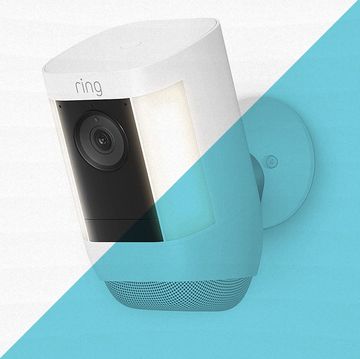Pieces of art like statues or paintings are fairly simple to preserve and display: Make sure they don't physically deteriorate and place them in a room. Technological art, with its myriad variables, becomes much more complex. How much more? This 7,000-word report on how best to put a GIF in a museum gives a fascinating peek into the monumental challenge.
Commissioned by the Museum of the Moving Image in New York City, the dizzingly in-depth report by Small Data Industries concerns itself in fairly equal part with the extremely nitty-gritty details of how the GIF works and how it came to be, and the specific challenges of displaying GIFs authentically in an exhibit.
It may seem easy enough in theory, but immediately becomes complicated in practice. The rigs most museums used to display moving images don't natively support the ancient GIF format, which means exhibitors may need to transform a GIF into a video file, which may change the way it appears in significant ways.
What's more, the extreme limitations of the GIF format and the restrictions of websites that display them traditionally play a huge roll in the way GIFs are made, with talented GIFsmiths painstakingly tweaking the size and color palette as well as editing frame-by-frame to make the best-looking, smallest possible file. All that nuance can disappear if you're not careful to preserve both the GIF itself, and the context of its creation.
As prolific GIF-artist Jason Walter, known to the GIF world as "EditingAndLayout" explained to Popular Mechanics in 2016:
"Imgur's limit was 2 MB back when I really started. You couldn't even upload a file bigger than that. You just had to figure out how to make it smaller. ...That puzzle of trying to make a GIF look good and still get the size in under the line, that is like an art form to me."
The "solution" the study considers isn't any one thing, but a whole number of measures. Working with artists to ensure that the conditions of display don't run roughshod over their intentions is a start. For longer-term storage, historians could store GIF and video versions of an animation alongside detailed metadata about the original GIF file, which would serve as a sort of instruction manual for authentic rendering. On the very extreme end of the spectrum, exhibitors might even go so far as fully emulate decades-old hardware to ensure that variables like CPU speeds or screen technology don't mess up the visual representation the artist intended.
From the paper:
One final point of consideration when exhibiting historic Animated GIFs from the early web: it is often the case that these GIFs play back at a faster rate today, as they were limited by the slow CPUs of the time of their creation. Employing emulation to view historic Animated GIFs in something close to a period specific CPU, operating system, and web browser is highly recommended for assessing this variability when preparing for exhibition. If there is a discrepancy between period-specific playback speed, and contemporary playback speed, this can be fixed at the time of transcoding for exhibition either by manipulating the derivative video’s frame rate or using a GIF editor to manipulate frame delays to adhere to the documented original playback speed.
If that seems like a lot of work to go through for a GIF, it is! But the failure to do it will mean the permanent loss of an entire, fascinating art from that grew out of the strange evolution of the web, and has amazingly refused to die despite concerted efforts to kill it. Similar fates threaten to befall other tech-based art forms as well, like any number of video games that are slowly becoming lost to time. Fortunately some bold archivists refuse to be caught on their heels, because despite what some GIFs might have you believe, these things do in fact matter.















